It was a long time since I last visited Halifax and hearing about the re-opening of its Piece Hall, I decided to take a look. The town is located in the South Pennines of West Yorkshire, four miles from the M62 motorway. It’s easily accessible by train, my preferred mode of transport, and lies on the Calderdale Line with connections to York, Leeds and Manchester.
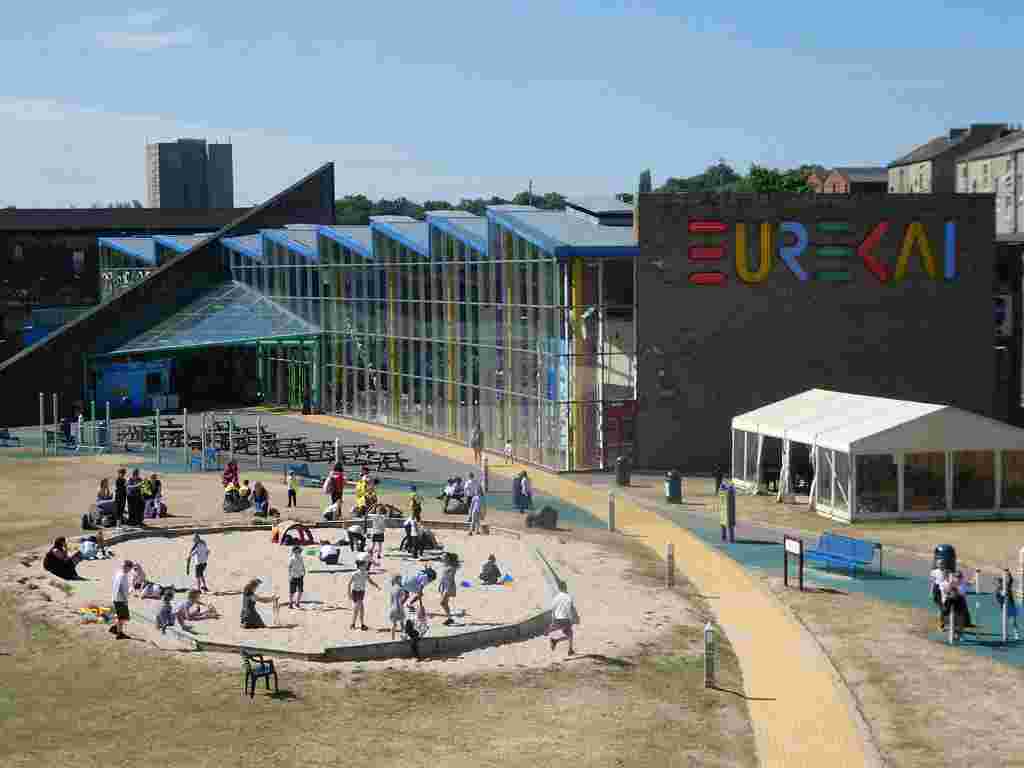
Leaving the railway station, I spotted Eureka, the National Children’s Museum which was inspired by Prince Charles in 1992. I remember taking my own children there when they were small where they enjoyed all the hands-on activities. It’s probably the only other time I’ve been to Halifax and the first time I’ve had a proper look around.
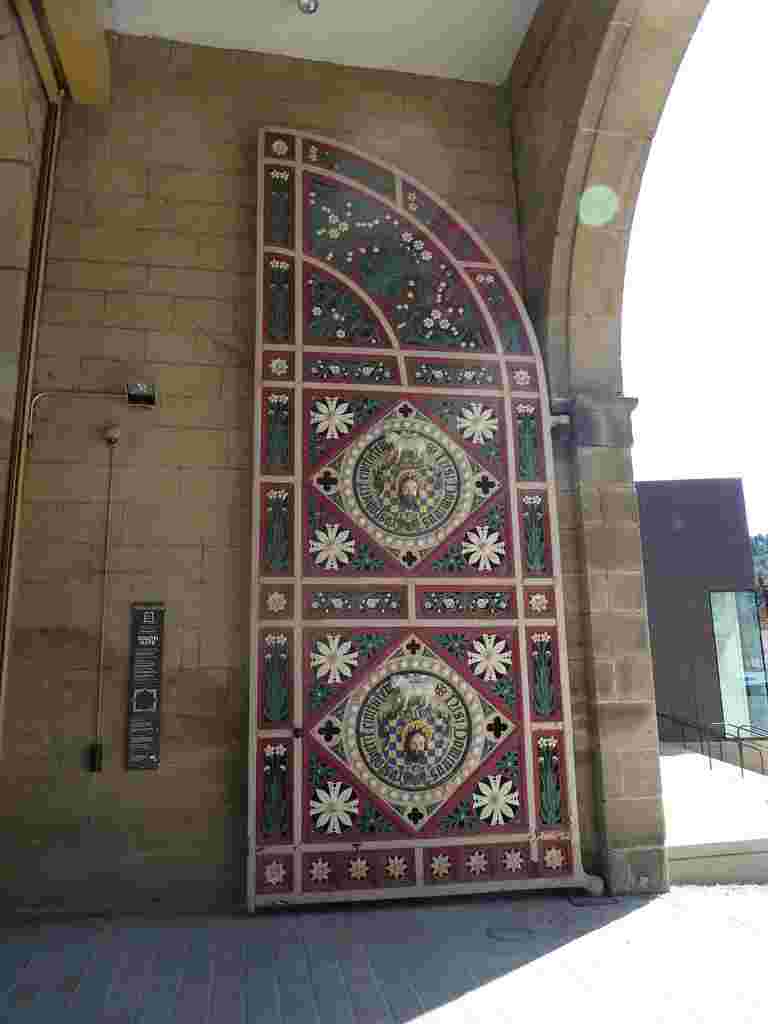
Halifax was a centre of woollen and carpet manufacturing from the 15th century with pieces of cloth being traded at the Piece Hall each Saturday for almost 250 years. I’d read that the Piece Hall had undergone a three year £19 million conservation and transformation programme partly funded by the Heritage Lottery Fund. It re-opened on 1st August 2017 (Yorkshire Day) and has received numerous prestigious awards.
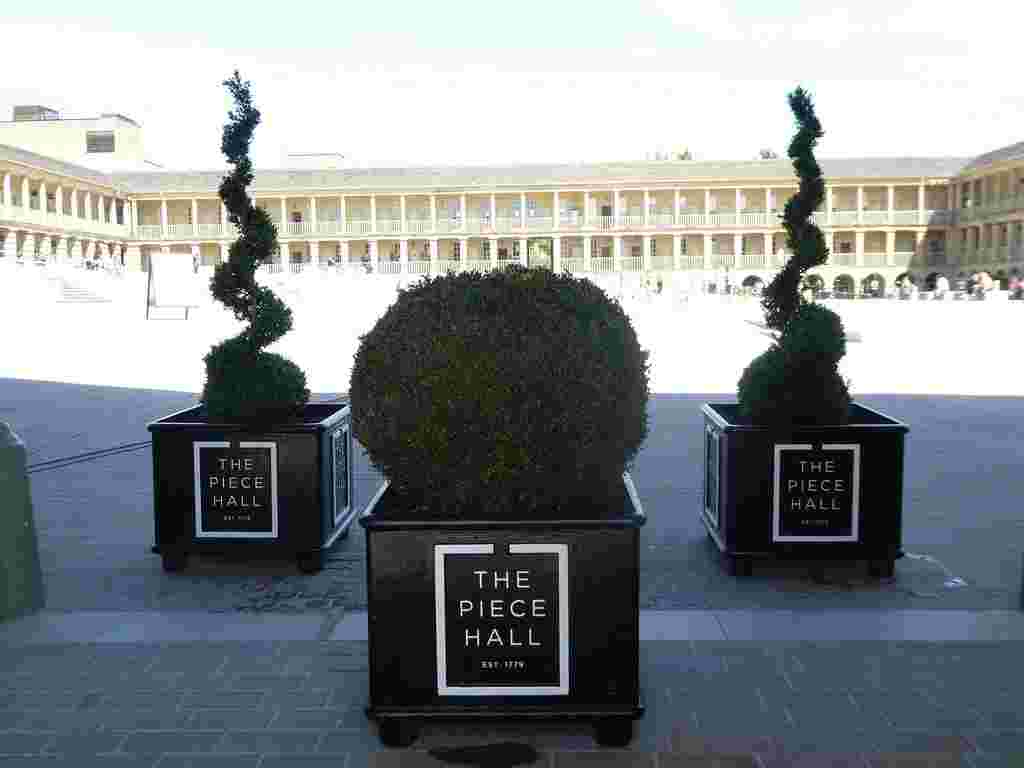
I entered the Piece Hall through its magnificent south gates which have been repaired and restored to their original condition and decorative scene. The gates were made in Glasgow in 1871 with a wrought iron framework bearing cast iron panels depicting John the Baptist.
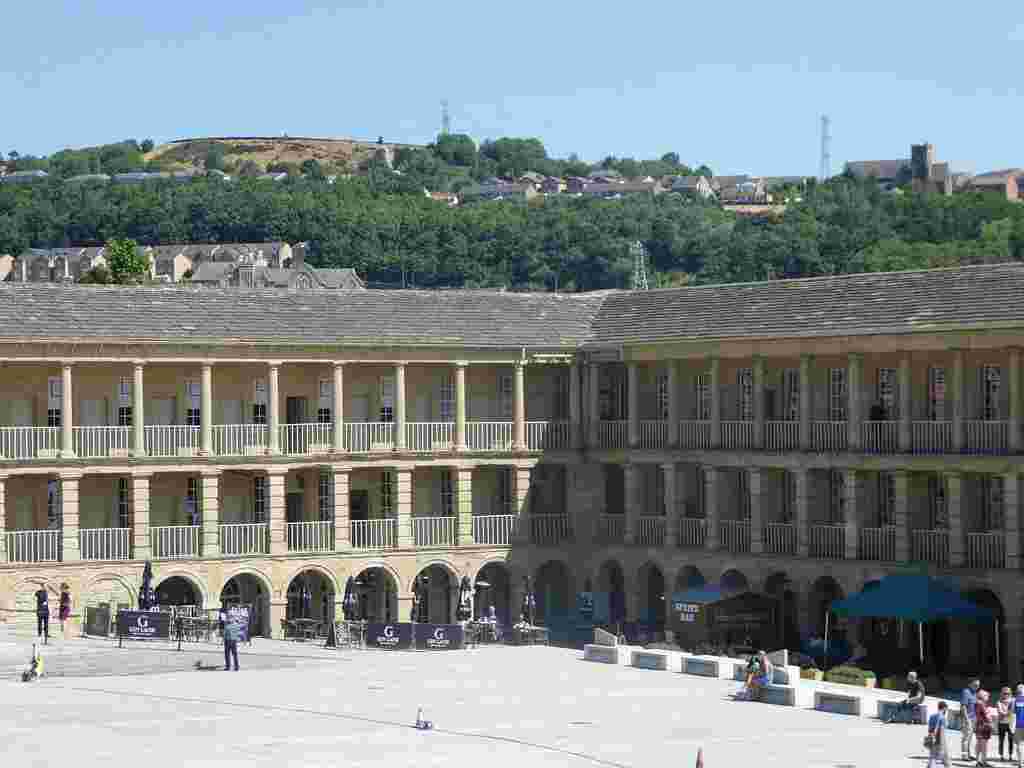
The gates lead to a vast square with Georgian buildings on each side fronted by interior colonnades leading to 315 separate rooms where cloth was traded. This Grade 1 listed building is a sole survivor of the great 18th century cloth halls, dominating the trade in hand woven textiles. It dates from 1779 when it was built for the trading of ‘pieces’ of cloth, a 30 yard length of woven woollen fabric produced on a handloom.
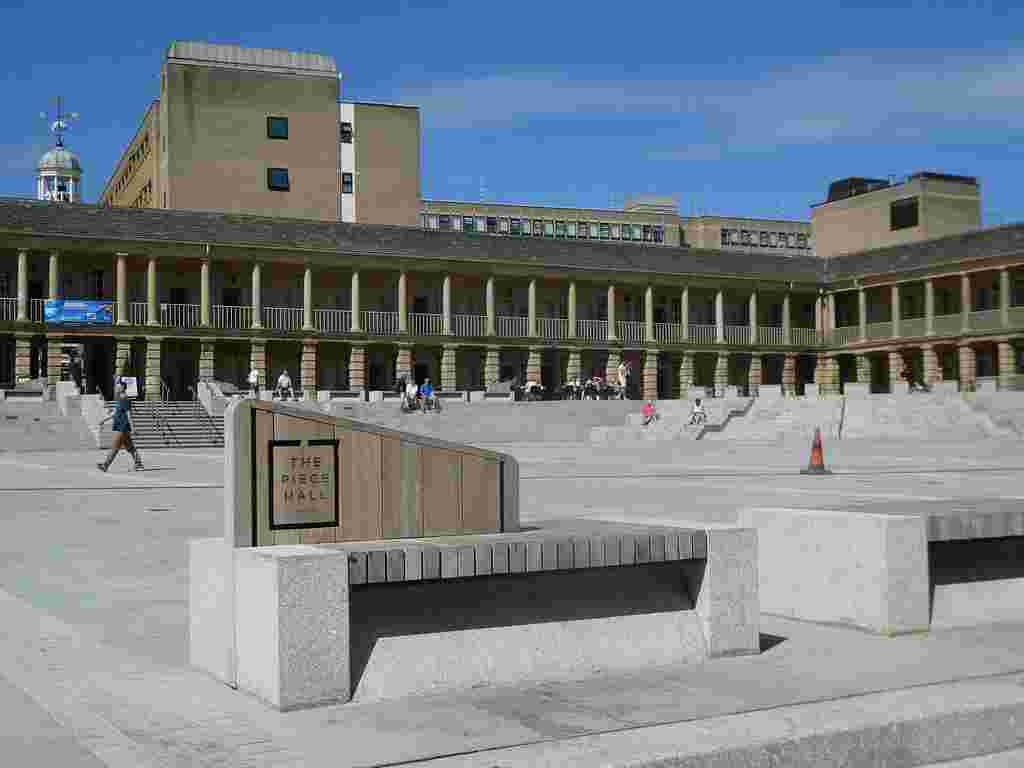
The Piece Hall was a stunning combination of commerce and culture and since its restoration it is again a centre for business, arts and people. Some of the heritage spaces are now occupied by local artisans, galleries and independent, specialist retailers.
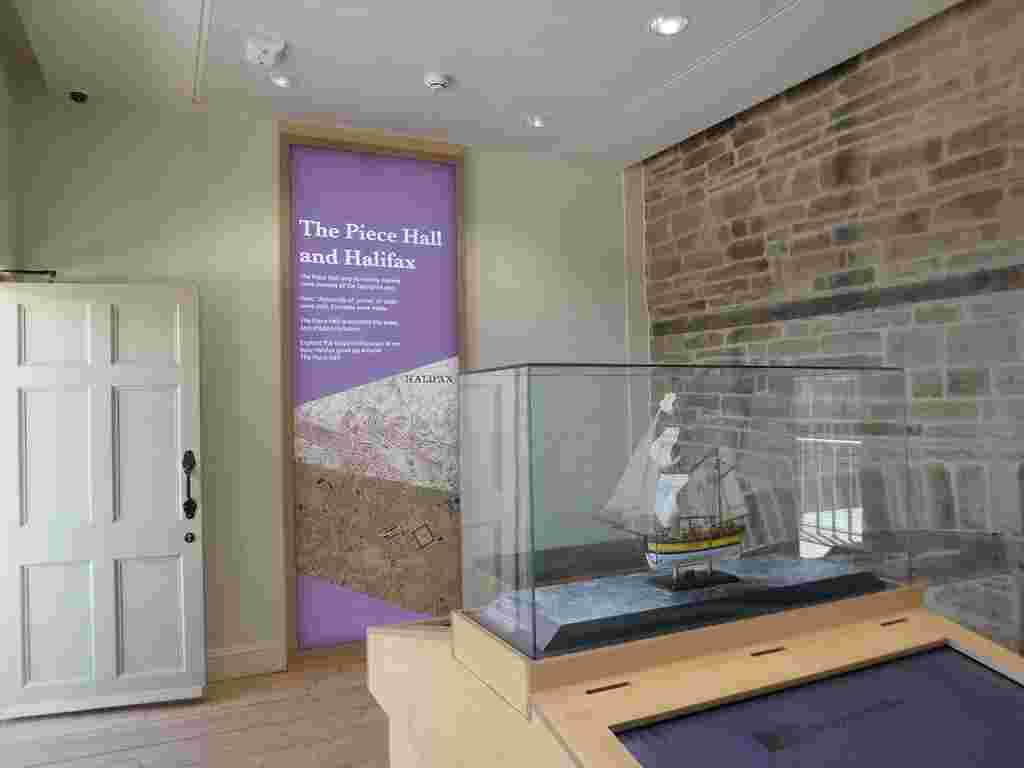
Three heritage spaces tell the story of the Piece Hall. The first one we visited was the ‘Piece Hall Story’ which is an interactive heritage space about the significance of the Hall where visitors can even try on Georgian costumes. Next, I explored the Map Room which has interactive maps demonstrating how woollen cloth sold in Halifax was traded across the world. The third heritage space was called the Trader’s Room and this was set out in its original condition so that we were able to visualise the sights and sounds of what it would have been like to be standing inside the Hall on a busy trading day in 1779.
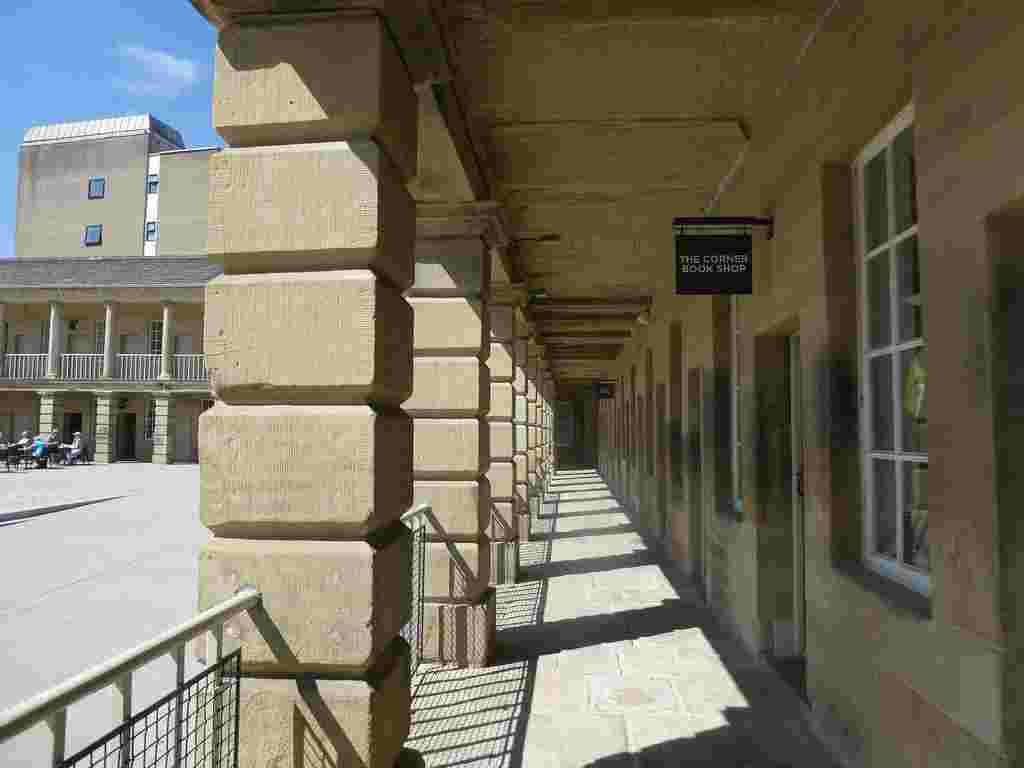
Continuing, I made my way back down the stone steps to the square where I found several cafes, a new Library and the Calderdale Industrial Museum creating a cultural quarter in this part of town. The Piece Hall plaza now hosts a vast array of events ranging from classical music to street performers.
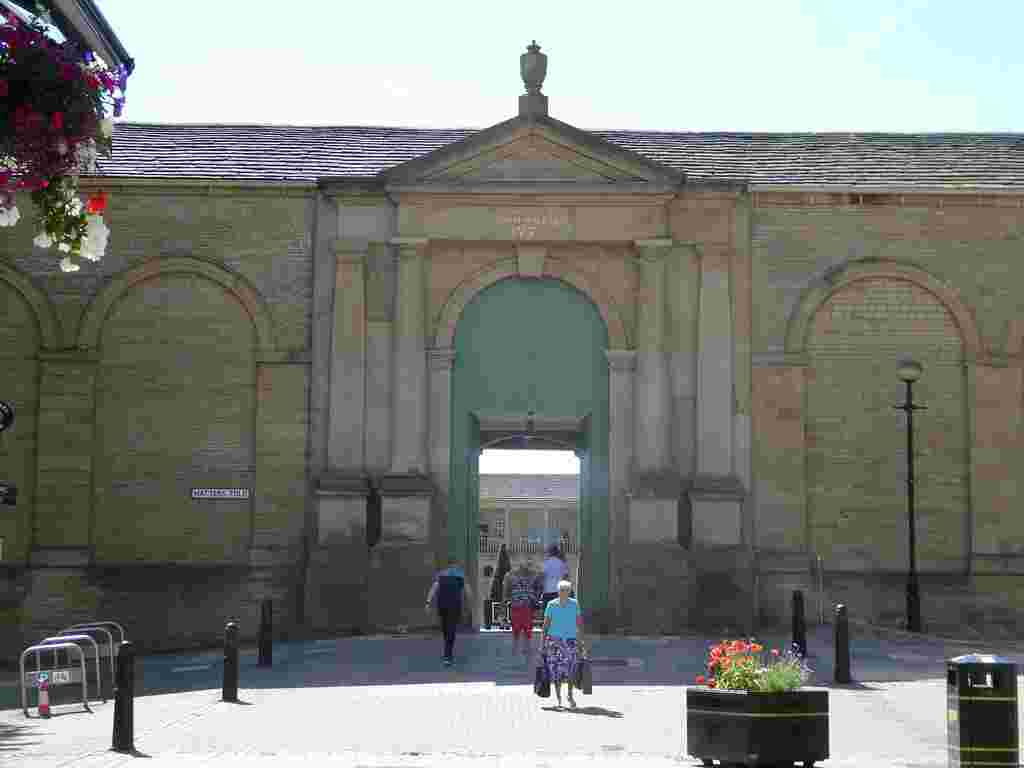
The north gate leads out to the Woolshops Shopping Centre which is comprised of a pedestrianised zone lined with shops. This area was very welcoming with its many hanging baskets and flower pots brimming with petunias, geraniums and other assorted annuals.
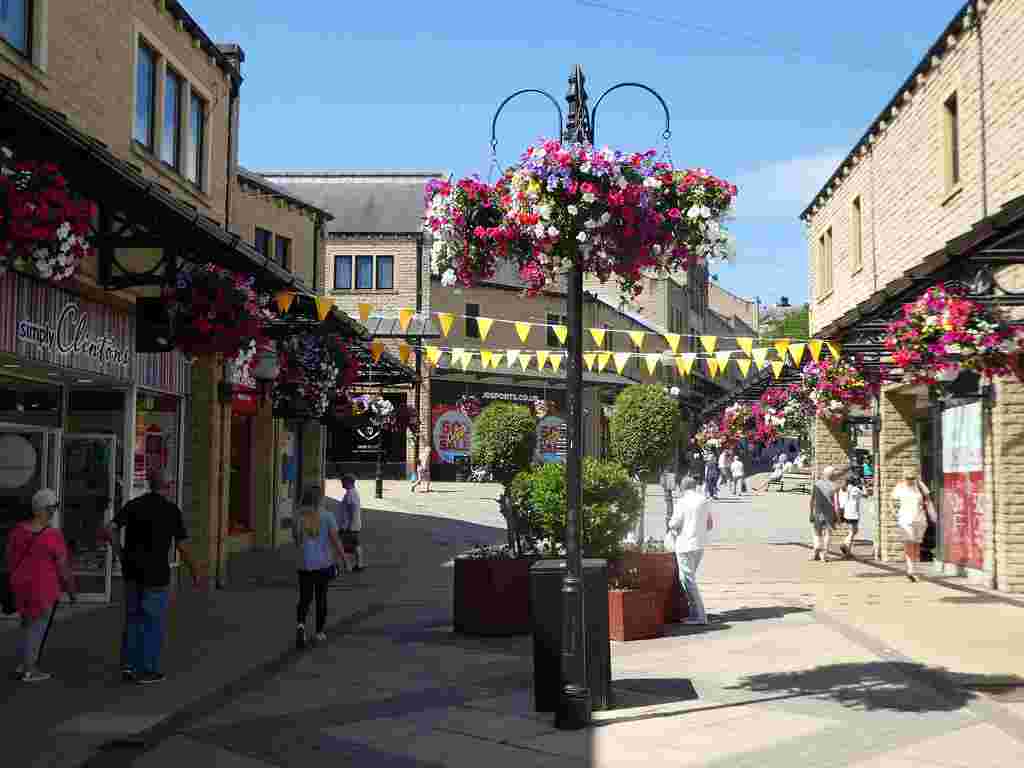
As I continued slightly uphill I found pleasant wide shopping streets with flowers everywhere. Noticing a covered archway, I wandered through the ornate Victorian arcade to the Borough Market.
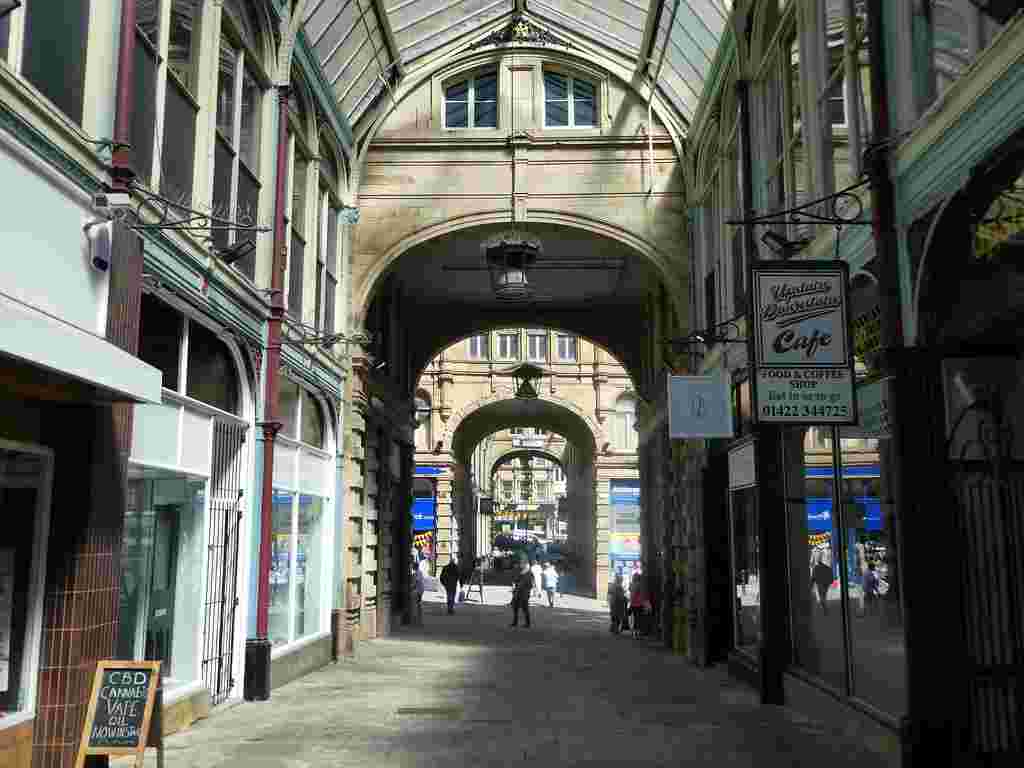
This beautiful glass and wrought iron covered market place was built between 1891-1896 and still flourishes today with over 100 market stalls operating six days a week selling fresh produce and household goods. Suspended from the roof in the centre of the market hall is a 60ft (18 metre) high octagonal lantern which is supported by cast iron columns. Hanging below the lantern is a decorative clock which is visible from most parts of the hall.
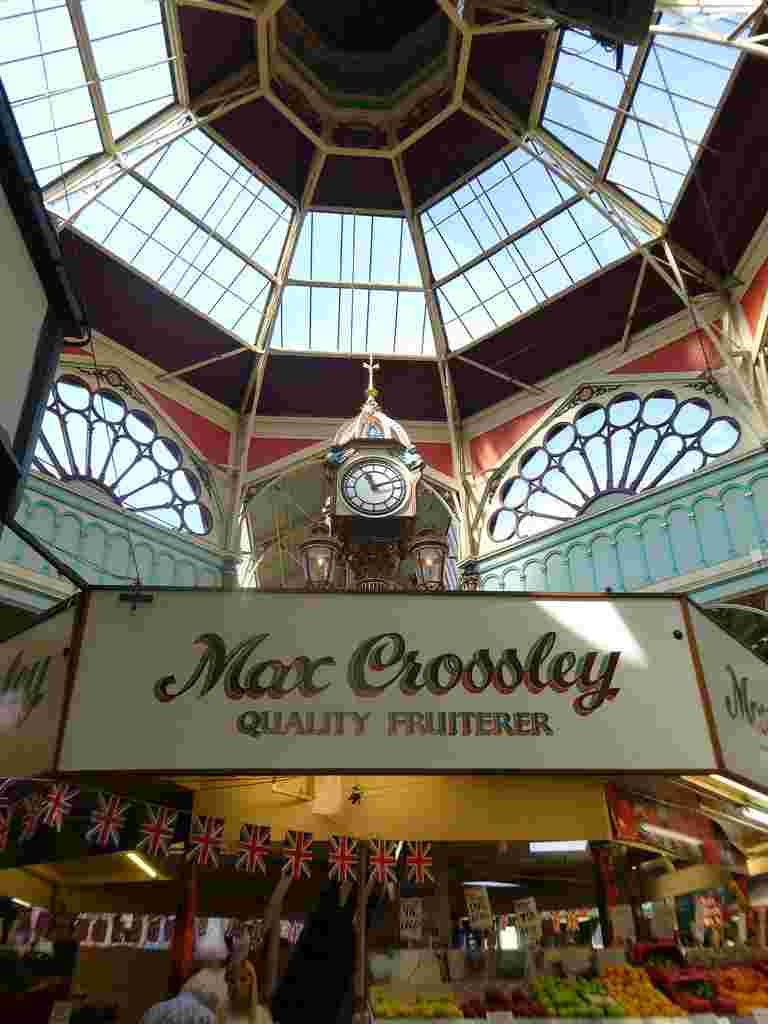
On leaving the market I slowly made my way to the top of the town as I wished to take a look at the former headquarters of the Halifax Building Society which originated in the town and is now the offices of Lloyds Banking Group. Near there, I came across Harvey’s, an upmarket independent store where I spent some time enjoying looking around and having a light lunch.
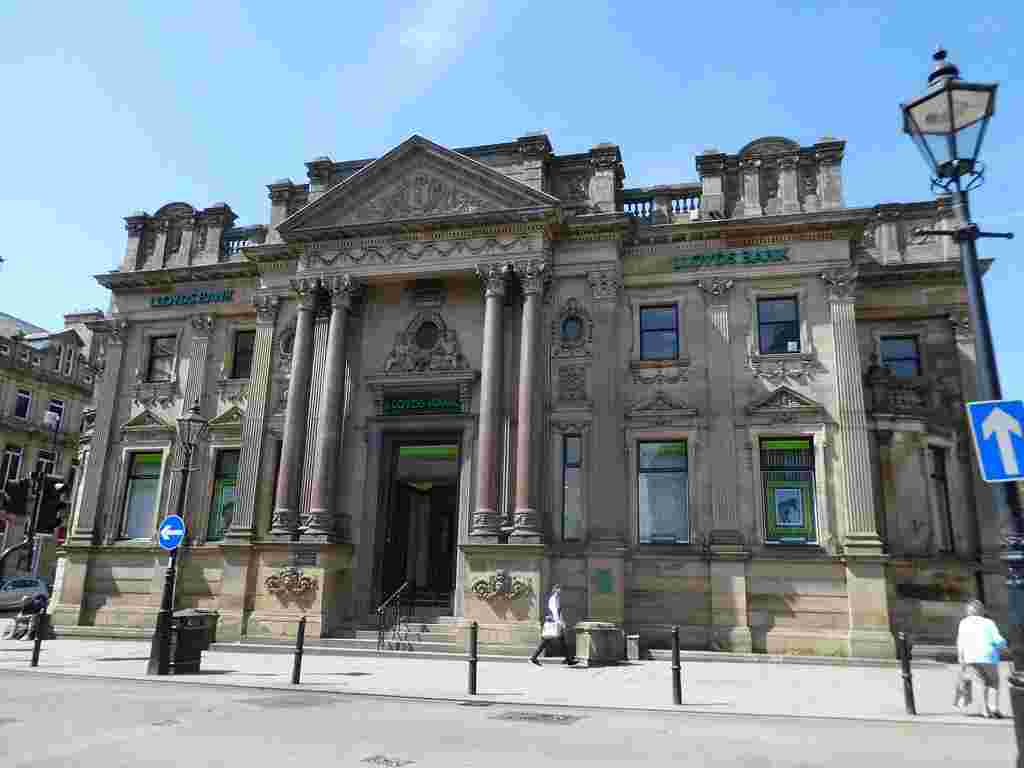
Retracing my steps back down towards the station I just had one more place I wished to visit and this was Halifax Minster. The 15th century church of St. John the Baptist was given minster status in 2009 in recognition of its important role in civic life in the borough.
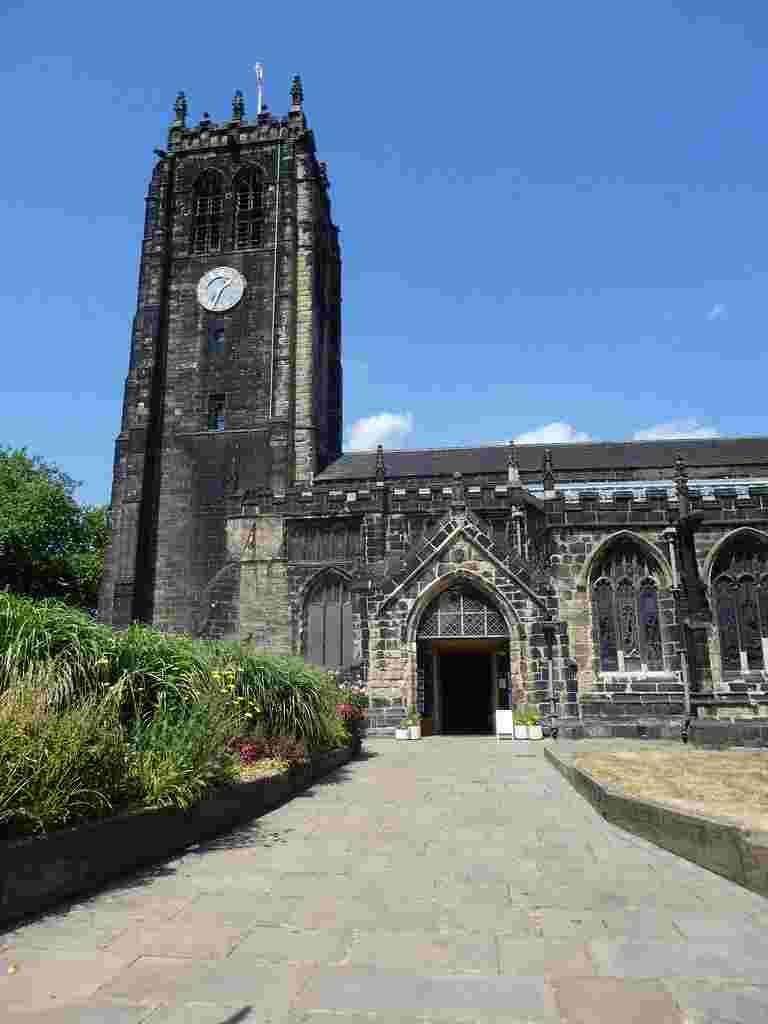
Stepping indoors, the historic interior of the minster is absolutely beautiful with its stained glass and painted wooden ceiling panels. I particularly liked the font which is acknowledged as being one of the finest in England. The stone font bowl is thought to date from the 15th century. The Jacobean pews are another prominent feature dating from 1623-1635. Admission to the minster is free but donations towards the upkeep of the church are welcomed.
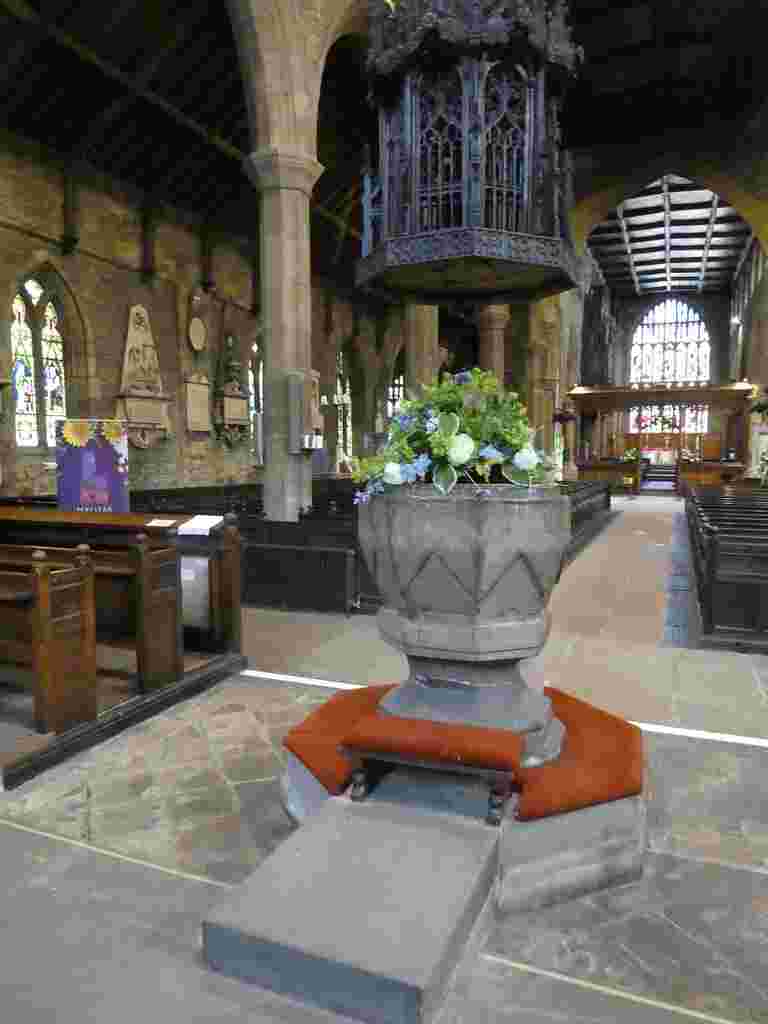
It was then time for me to return to the railway station and make my way home. I very much enjoyed my wander around Halifax and hope to return before too long to see more of what the town has to offer.
If you have enjoyed reading this post you may also be interested in the following:
Exploring Hebden Bridge, Halifax and Sowerby Bridge
Heptonstall and Todmorden, Calderdale
Suggested accommodation near Halifax:


Leave a comment